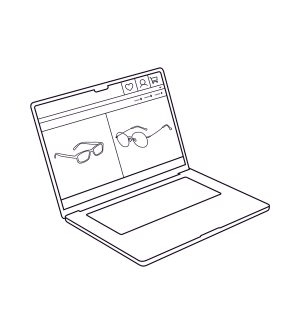Why Did My Eyeglass Prescription Change?
Author: Alexander Martin, OD FAAO
If you recently got a new prescription and noticed the numbers are different from last time, you might be wondering: “Did something happen to my eyes?” The good news is: it’s completely normal for your prescription to change over time. Let’s walk through why it happens—and when it’s something to keep an eye on.
LEARN MORE
1. Your Eyes Naturally Change Over Time
Just like the rest of your body, your eyes go through changes as you grow and age.
Here’s how it usually plays out:
- Childhood to Early 20s: Your eyes are still growing. Changes in nearsightedness (myopia) or farsightedness (hyperopia) are common during these years.
- Mid-20s to Late 30s: For most people, prescriptions start to stabilize. You might still see small changes, but they usually aren’t drastic.
- Around Age 40 and Beyond: Almost everyone starts to experience presbyopia—the natural loss of the ability to focus on close-up objects.This is when people often need reading glasses or an “Add” power added to their prescription.
Bottom line:
It’s normal for your eyes to shift slightly depending on your age—and a new prescription just helps you keep seeing clearly.
2. More Screen Time = More Eye Strain
Today, most of us spend hours staring at screens: phones, tablets, computers, TVs.
That can cause digital eye strain, which might temporarily make your vision feel worse.
While eye strain usually doesn’t permanently change your prescription, it can make you notice blurry vision more—or make small prescription changes feel more necessary.
Signs of digital eye strain:
- Blurry vision after screen use
- Dry, tired eyes
- Headaches
- Difficulty focusing
Taking regular screen breaks (the 20-20-20 rule: every 20 minutes, look 20 feet away for 20 seconds) can help protect your eyes. Also take a second to make sure that you are blinking completely whenever possible.
3. Health and Lifestyle Factors
Believe it or not, general health affects your eyes too.
Things like:
- Diabetes
- High blood pressure
- Medications
- Hormonal changes (like during pregnancy)
…can all impact your vision temporarily or permanently.
In some cases, an updated prescription is simply adjusting to the natural shifts your body is going through.
4. Eye Conditions and Disease
While most prescription changes are normal, sometimes bigger shifts in vision can be an early sign of an eye condition.
This is why it’s so important to have regular comprehensive eye exams.
Some conditions that can cause vision changes include:
- Cataracts (clouding of the lens)
- Glaucoma (damage to the optic nerve)
- Macular degeneration (damage to the center of your retina)
Catching these conditions early makes a big difference—and is one reason regular exams are strongly recommended by both the American Optometric Association (AOA) and the New England College of Optometry (NECO).
5. It’s Been a While Since Your Last Check
Even if you feel like your vision hasn’t changed much, small shifts add up over time.
If it’s been more than a year or two since your last prescription, your eyes might have adapted slowly without you noticing. A vision test or eye exam just catches what your brain may have gotten used to.
Small tweaks to your prescription can make a big difference in your comfort, especially for reading, driving, or working on screens.
6. Small Changes Are Normal (and Often Not a Big Deal)
If your new prescription is different by just 0.25 diopters (like going from -2.00 to -2.25), it’s considered a very small change.
Many people won’t even notice a difference in how they see day-to-day.
Small adjustments like this are part of keeping your vision at its best, but they aren’t usually anything to worry about.
7. Prescriptions Are Part Science, Part Art
It’s important to remember that writing a prescription isn’t purely a math formula—it’s a mix of science and personal comfort.
Two different doctors might give you slightly different prescriptions based on:
- Your feedback about what feels clear and comfortable
- How your eyes respond during testing
- Whether you prioritize crispness for distance vs. less strain for close-up work
- Small differences in testing equipment or methods
That is why your prescription might not be exactly the same at every clinic—but both can still be correct for your needs.
Ultimately, the best prescription is the one that helps you see clearly and comfortably in your daily life.
A change in your prescription doesn’t mean something is wrong—it usually just means your eyes are doing what eyes naturally do: changing with time and use.
At Eyebot, our 90-second vision test makes it fast and easy to keep your prescription up to date, and every result is reviewed by a licensed doctor to make sure it’s accurate and trustworthy.
If it’s been a while since your last comprehensive eye exam, it’s a good idea to schedule one with an optometrist. Staying on top of your vision helps you catch any bigger issues early—and keeps the world looking crisp and clear.
For more information about eye health, visit trusted sources like the American Optometric Association (AOA) and the New England College of Optometry (NECO).
It’s completely normal for your prescription to change over time.
Ultimately, the best prescription is the one that helps you see clearly and comfortably in your daily life.
A change in your prescription doesn’t mean something is wrong—it usually just means your eyes are doing what eyes naturally do: changing with time and use.

